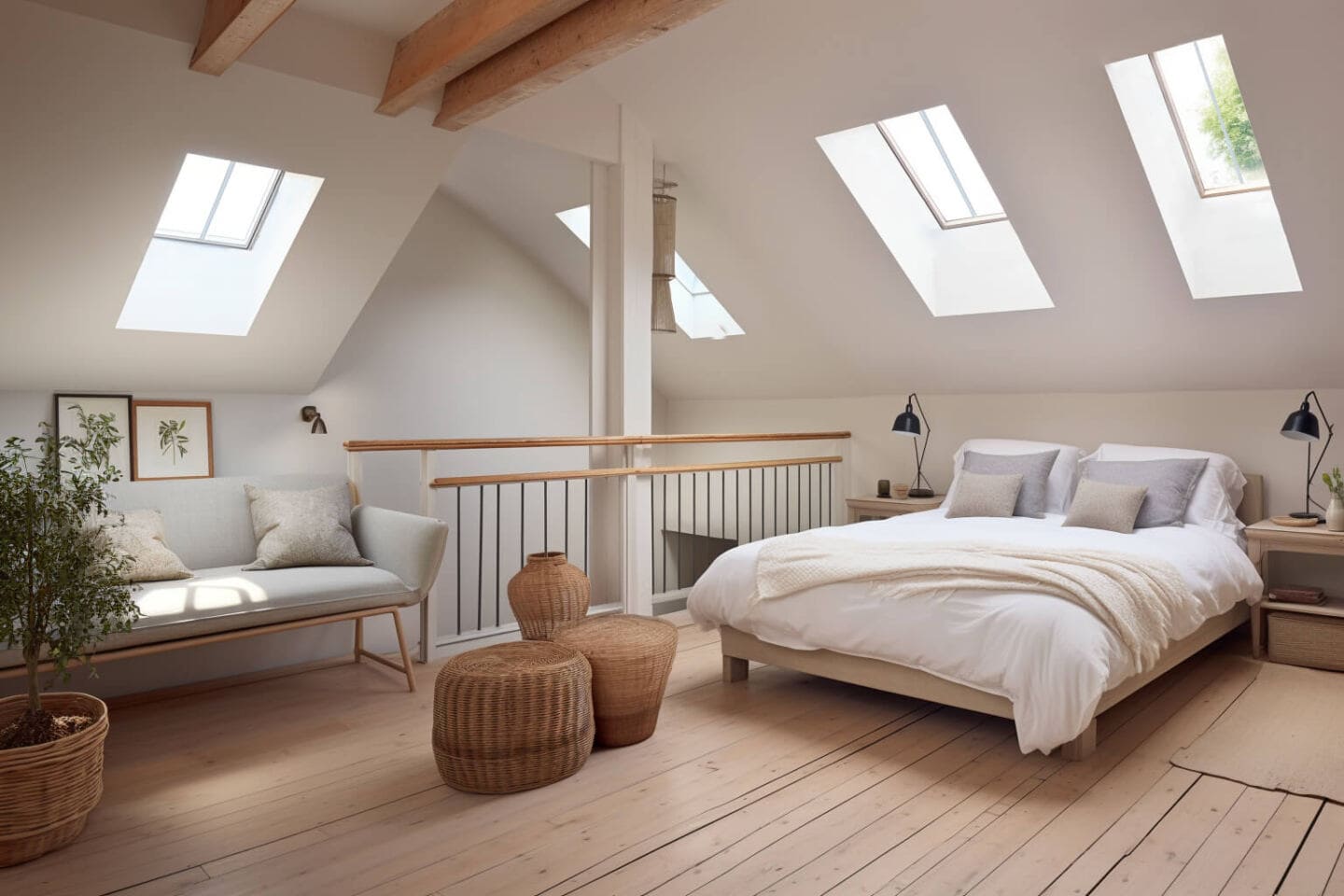
Rooflights can be used to enhance biophilic design in period properties
Period properties have always appealed to me as they are undeniably charming with all their quirks and unique characteristics that seem unreplicable in more modern properties. Their architectural beauty is truly unrivalled and each building tells a detailed story of the period in which it was built and how people used to live in that era.
The Selling Points of Period Properties
The timeless appeal of period properties and their exceptional build quality makes them a sought after option on the housing market. Their intricate details like ornate cornicing, ceiling roses, elaborate door surrounds and high skirting boards are important selling points. Features such as beautiful fireplaces, sash windows, wall panelling and parquet flooring are very attractive to buyers.
The Downsides of Period Properties
However, as charming as these properties may be, there are distinct disadvantages that can make them incompatible with the demands of modern homebuyers. Some of their features can result in darker interiors making them less appealing.
Deep but narrow floor plans broken in up into lots of smaller rooms make it difficult for natural daylight to enter the property and high ceilings often result in shadows and darker corners. Windows are often smaller sash windows, which, whilst attractive, are not particularly efficient at letting light into the property.
For many modern home buyers, a bright and airy home that feels spacious is high on the list of our requirements. We want a home that not only looks good but that makes us feel good too. Our awareness of the mental health and physical well-being benefits of biophilic design means that we now demand more from our homes, and period properties must work harder to meet these demands. Achieving this balance requires thoughtful design choices that respect the heritage of the property while meeting contemporary needs.
What is Biophilic Design?
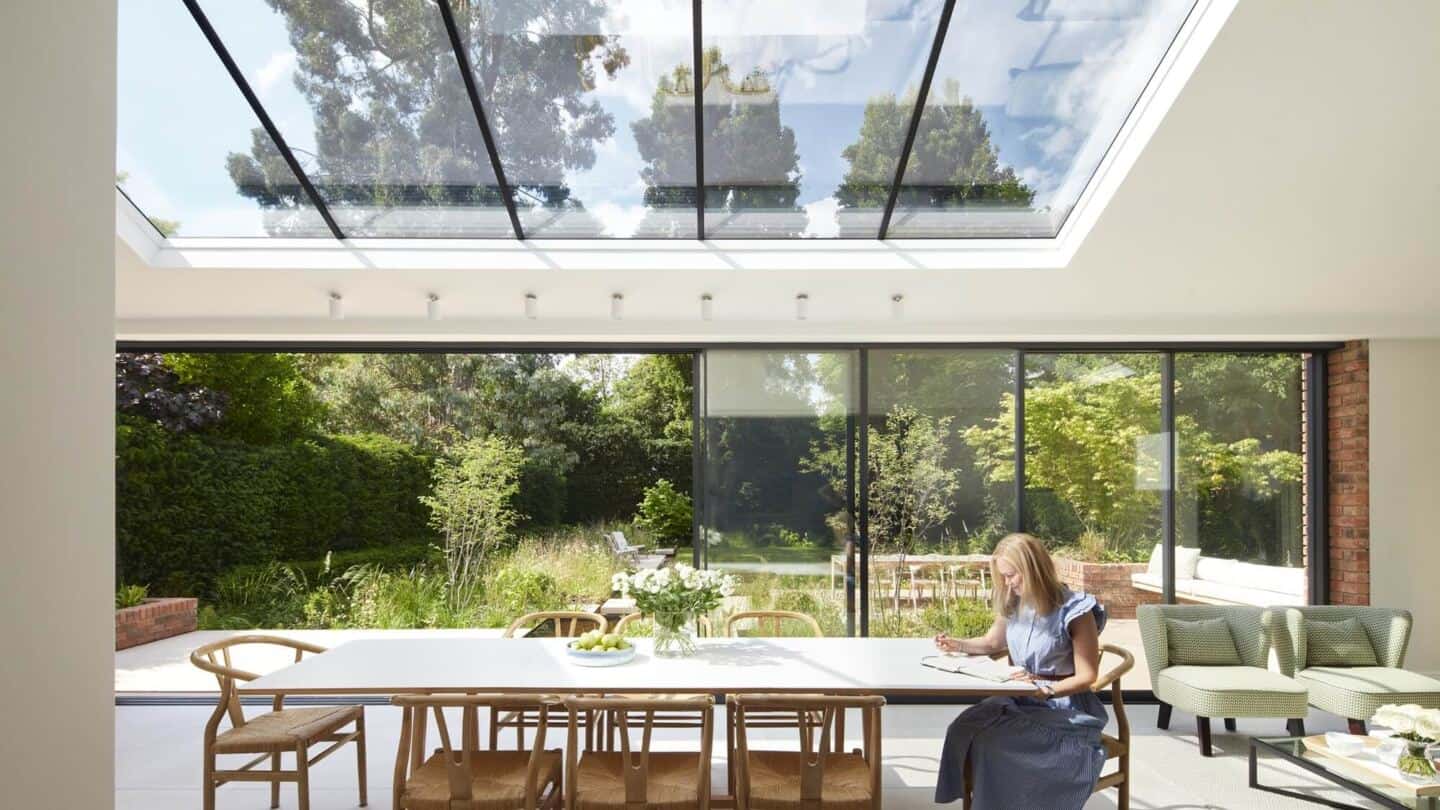
Rooflights by Stella Rooflight
Biophilic design is essentially about bringing nature back into the built environment. Studies have shown that being in or around nature promotes calm, relieves stress, helps us heal better and makes us more focused, productive, creative, and happy. I have written extensively about biophilic design and how we can bring it into our homes for improved mental health and physical wellbeing.
The Role of Natural Light in Biophilic Design
Natural light is central to the principles of biophilic design and will arguably make the biggest difference to your period property in terms of the wellbeing that it promotes. But in a period property that may be subject to strict building regulations and planning permissions, how can we bring more natural light into the space?
Rooflights provide a versatile and practical way to introduce natural light into heritage spaces without compromising the integrity of period architecture. By combining historical sensitivity with the health and aesthetic benefits of natural light, conservation rooflights have the potential to create period homes that are both functional and restorative.
Dynamic & Diffuse Light to Create Visual Drama
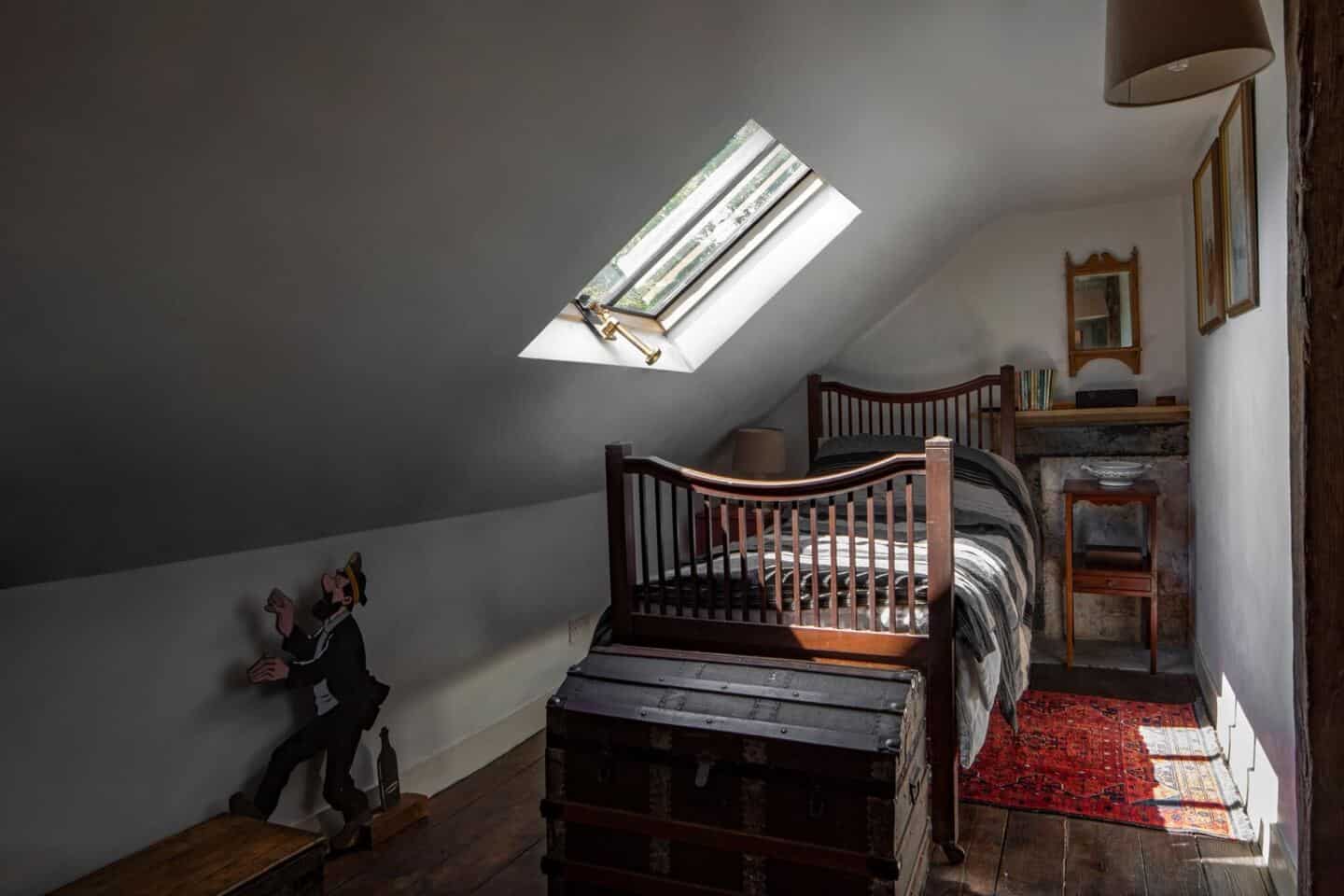
Rooflights by Stella Rooflight
But it is not just about flooding the space with natural light. One of the main principles of biophilic design looks at dynamic and diffuse light. It is beneficial to incorporate varying intensities of light and shadow that change over time mimicking the lighting conditions found in nature. The movement of light and the dancing of shadows that are cast allow us to experience the passing of time and create a strong connection to the rhythms of nature.
Rooflights allow this changing light to enter period properties where the small windows may not allow for this.
Non-Rhythmic Sensory Stimuli to Bring Nature to Life
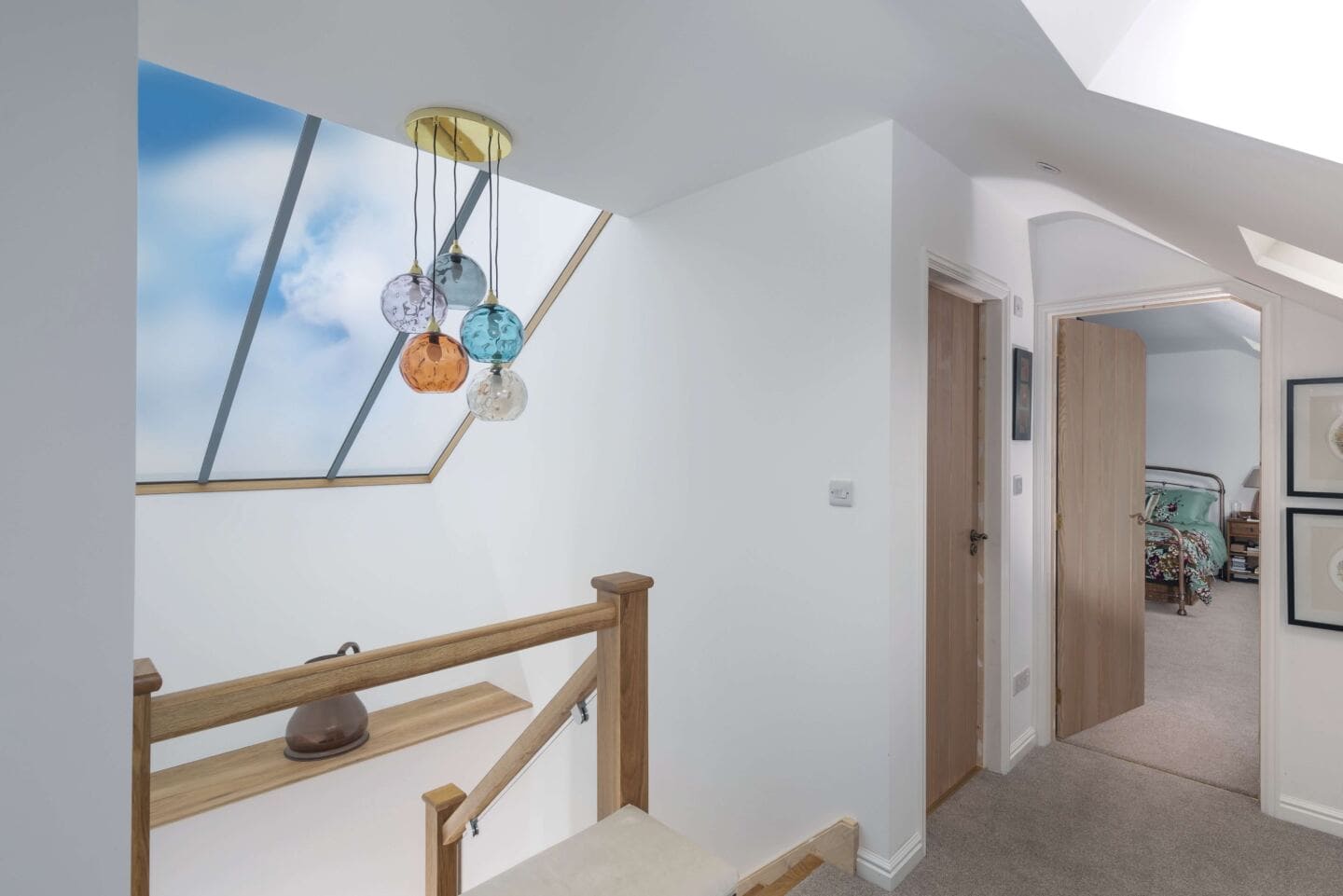
Rooflights by Stella Rooflight
Another principle of biophilic design is non-rhythmic sensory stimuli. This is essentially unpredictable movement that we might catch in our peripheral vision. This may be a butterfly or bird flying past, leaves falling or trees billowing in the wind, or even a brief moment of clouds moving across the sky.
These momentary experiences can become more frequent or noticeable once roof lights have been installed as the views outside and up at the sky allow for more exposure to these experiences from inside our homes. Rooflights can create the perfect frames for ever-changing natural scenes that incorporate views of trees, moving clouds or even rain patterns. These organic and non-repetitive patterns stimulate our senses and have been proven to reduce stress and mental fatigue.
Thermal & Airflow Variability to Enhance Comfort
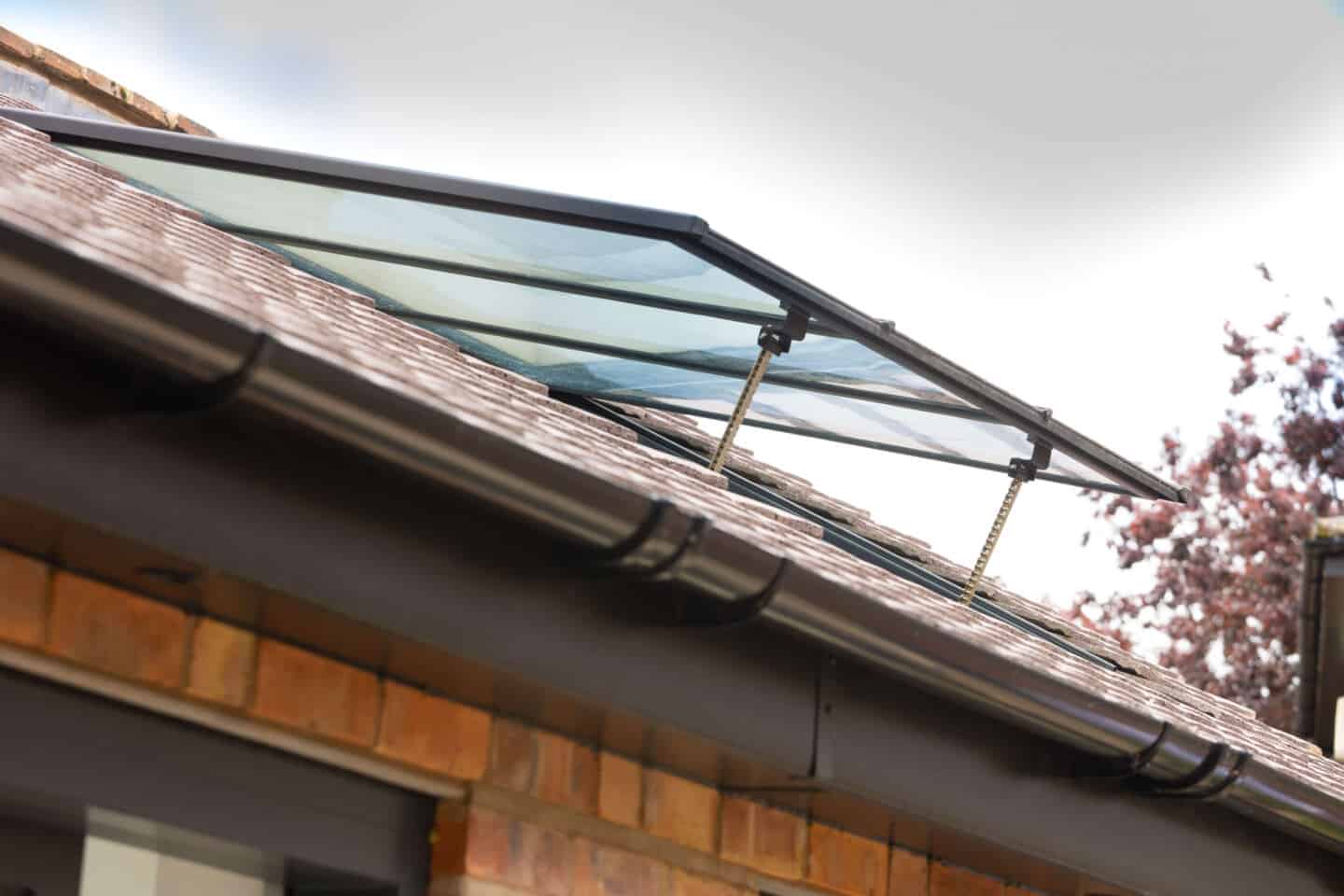
Rooflights by Stella Rooflight
If you opt for opening rooflights they can meet the requirements of another principle of biophilic design. This is the need for enhanced airflow and ventilation. We all know that fresh air makes us feel better and improves the quality of our indoor air. Rooflights that open are also great for temperature control as they allow a natural cooling or warming effect. Being able to feel that airflow across your skin and experience temperature variations when the rooflights are open enhance the sensory benefits.
Embracing Prospect and Refuge with Rooflights
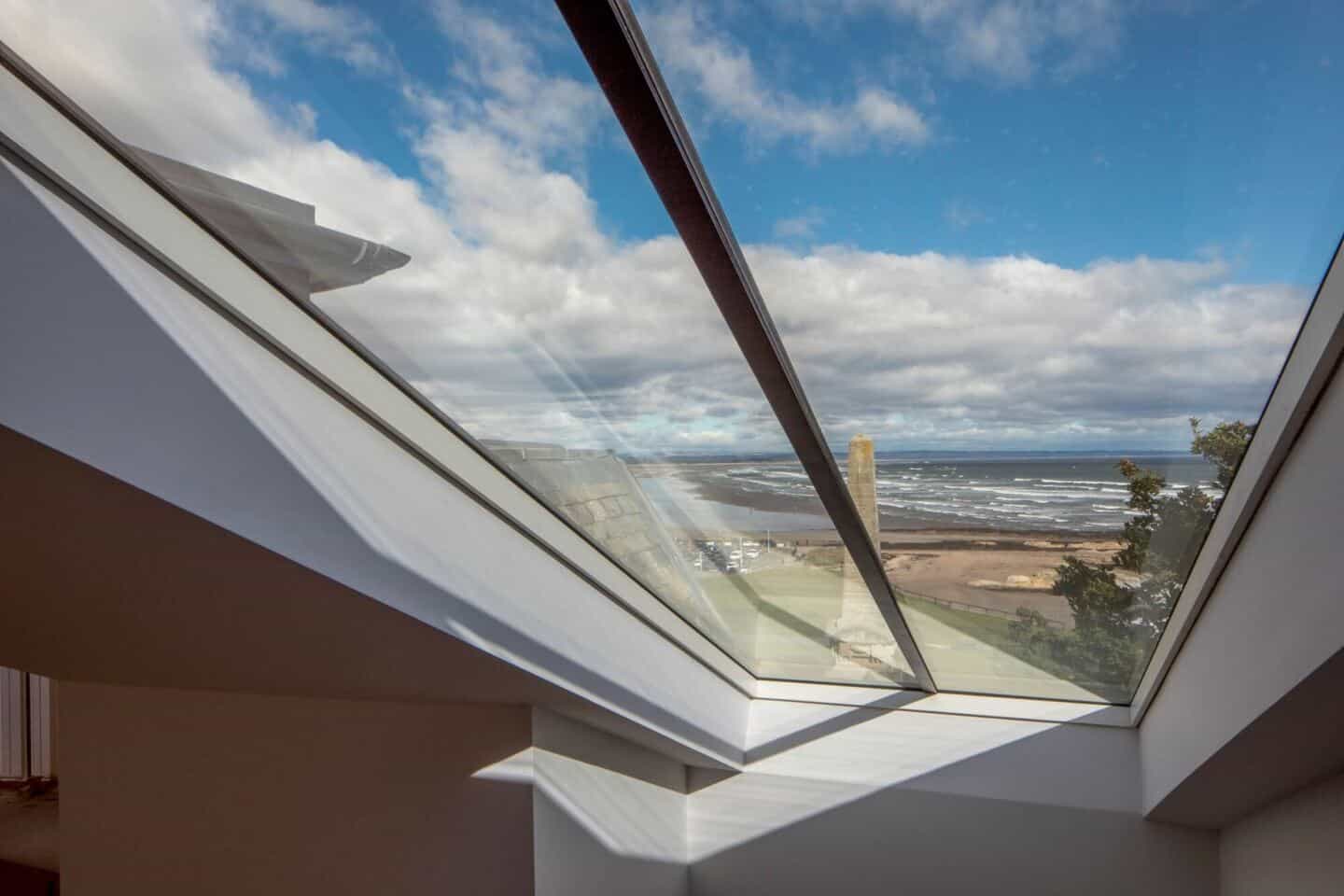
Rooflights by Stella Rooflight
As humans, we have an innate need to feel safe in our environment. Two ways that we can achieve this is by designing elements of prospect and refuge. A home with a good prospect condition has an unimpeded, elevated view over a distance. Installing rooflights opens up the views over a longer distance allowing you to surveil your surroundings and plan an escape if necessary. This meets our need for safety and control. A sense of prospect can be further developed where rooflights are used with a mezzanine level or in loft spaces to maximise the views.
However, as humans we also want our homes to provide a sense of refuge. Period properties often provide this cosy, enclosed feeling and when rooflights are installed a nice balance of prospect and refuge can be achieved.
Playing with Risk and Peril
Whilst humans like to feel in our surroundings, we also like to introduce a bit of risk and danger as long as the threat is identifiable and there is a reliable safeguard. Think glass walkways! Rooflights are a great way to introduce risk and peril into a home as they allow you to play with height, views or daring architectural features without compromising on safety.
Maintaining Period Authenticity
The great thing about choosing rooflights to enhance biophilic design in period properties is that they can be designed to respect the historical character of the heritage home. Conservation rooflights can be designed bespoke for the property, they are low-profile and the spacing of the glazing bars can be arranged to fit with the rafters making them an ideal solution for period properties.
Rooflights are a very effective way of bringing the outdoors in and incorporating many of the principles of biophilic design in period properties whilst respecting and enhancing the architectural heritage of the building. Consulting conservation rooflight experts will enable you to choose the perfect rooflights that complement your home’s character.
